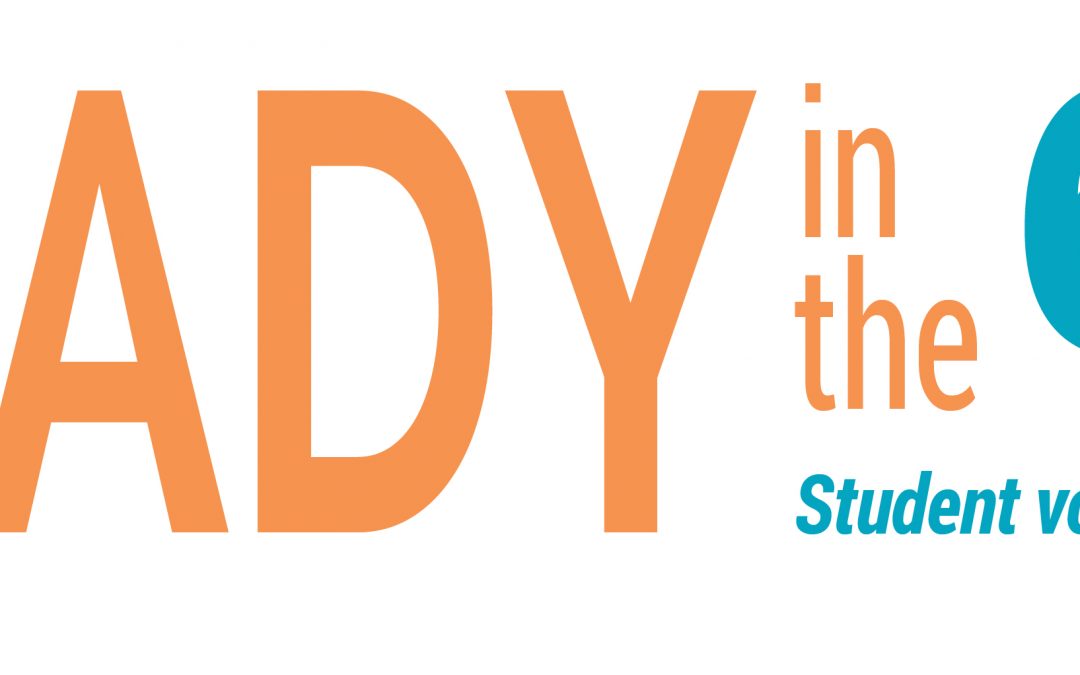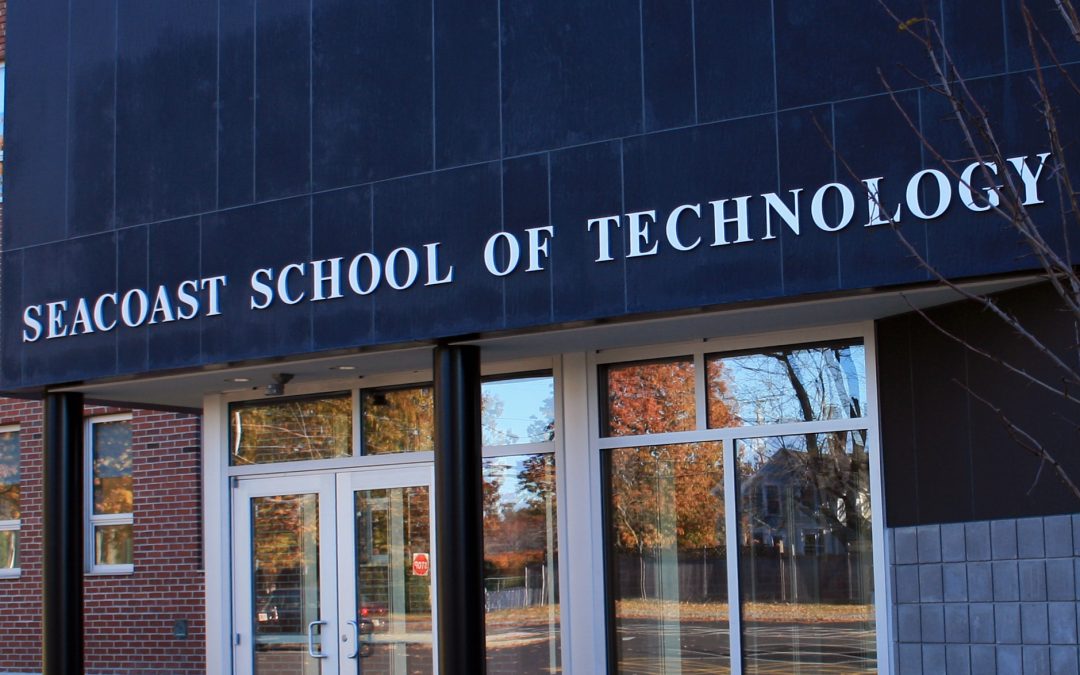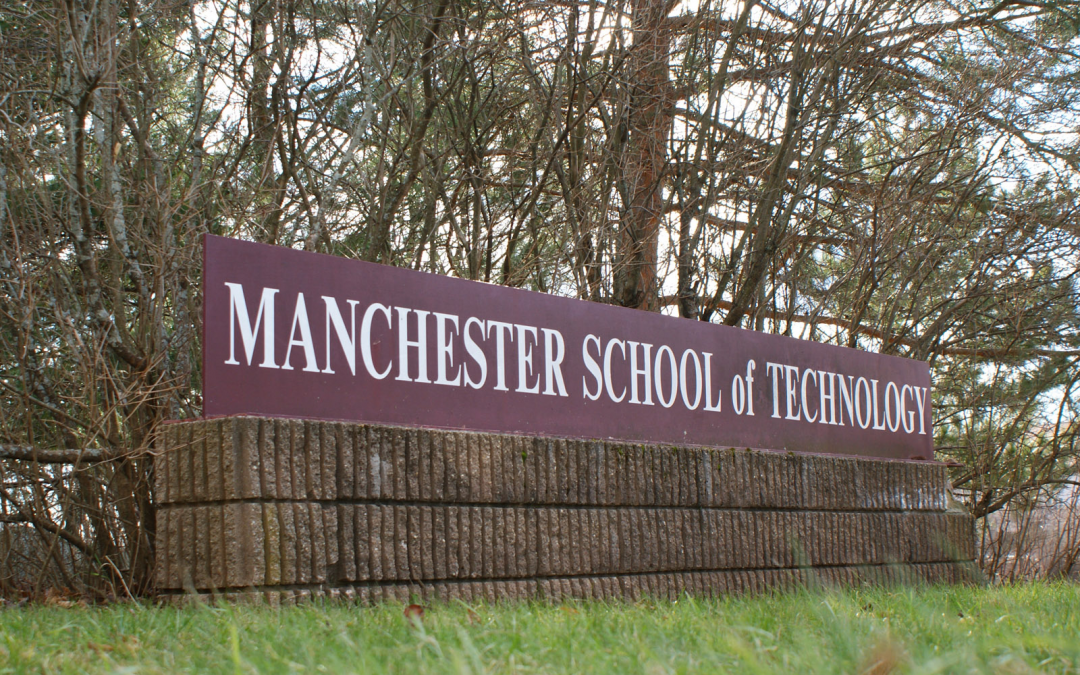
Oct 31, 2017 | Article
As automation and artificial intelligence continue to change the way all industries operate, students planning for college and careers face a unique challenge – securing educational opportunities that will serve them in a world where employment needs change faster than the time it takes to earn a post-secondary degree or job training. The Ready in the 603 video series, produced by Reaching Higher NH (RHNH), highlights how New Hampshire students are taking advantage of innovative opportunities to prepare themselves for college, careers, and service after graduation, and provides insight into this challenge.
The series is the result of hundreds of student interviews RHNH conducted across the state last spring to learn about the impact of programs such as Career Technical Education (CTE), Extended Learning Opportunities (ELO), Running Start, and others. Reaching Higher NH took what they heard and identified the common threads to produce the series.
The series is featured as part of their Ready in the 603 contest, www.reachinghighernh.org/readyingthe603/, where viewers are encouraged to vote for the video that they find most compelling and share what programs they would like to see more in their schools. Participation in the project helps Reaching Higher NH continue their work in telling the stories in NH public education from the student perspective.
“Many of the stories we heard were so inspiring, we found ourselves watching the videos over and over,” said Robin deAlmeida, Marketing Communications Director, Reaching Higher NH. “It was an amazing opportunity to listen to, and learn from, the young people we are working daily to support.”
The videos bring to light important opportunities for students in NH. Families should know how these programs can take learning to the next level. In some cases, high school students earn up to 20 college credits and professional certifications through programs like those featured in the video series.
Many of the students interviewed shed light on the evolution of CTE. What was once exclusively a vocational program now covers high demand careers such as engineering, biotech, and business.
“These are rigorous academic models where students apply what they learn in the field,” said deAlmedia. “Post-secondary education is expensive and highly competitive–we all know this. Having high school students in the field before graduation empowers them to make informed decisions about their future, allows them to establish mentors, and provides them with a competitive advantage in pursing whatever they want after high school. These programs are for every student, from the ones that excel in the classroom to the ones that learn better in a hands-on environment. These are deep and meaningful learning experiences.”
Reaching Higher NH’s mission is to foster support for high quality public education, giving all New Hampshire children the opportunity to prepare for college, for immediate careers, and for the challenges and opportunities of life in 21st Century New Hampshire. Learn more at www.reachinghighernh.org

Oct 24, 2017 | Article, Building & Construction Trades
On Thursday, October 26, hundreds of business owners, architects, contractors and others are expected to attend the Annual “Excellence in Construction” Awards, presented by the Associated Builders and Contractors, New Hampshire/Vermont Chapter (ABCNHVT).
At the event in which there are seats for 50 teachers and students at no charge, ABCNHVT’s Jennifer Landon said the purpose behind it is threefold.
“It’s an opportunity to promote our industry, improve our image, and communicate to the public about the importance of the construction industry and the value construction professionals provide to our economy and all of society,” she said.
For ABCNHVT’s new president Josh Reap, the event highlights construction industry needs.
“The mounting shortage of skilled construction workers has acted as a drag on the ability to get things done,” he said. “Every contractor I talk to says their biggest problem is finding people and that is backed up by the statistic that we have the nation’s fourth lowest construction-related unemployment rate. The average age of a New Hampshire construction worker is 45, so anyone entering the industry now will find years of stable employment.”
In discussing the role of ABCNHVT, he said a big part of what they do is forge partnerships with local schools and industry allies “to get the word out” about the need for people in the construction industry today. He said part of their job as an agency is to create opportunities for career professionals to tell their story to students about what it is like in construction and how it has provided both opportunity and a pathwnay to a good life.
“There are presently 500,000 jobs that are ready to be filled right now in the American construction industry,” he added.
In hosting the event on October 26, Reap said it is an opportunity for them to recognize the outstanding projects of the year among ABCNHVT membership. He said the event also serves to help invited high school students and CTE professionals learn more about careers in construction.
“We will have a special feature on Careers in Construction to raise awareness of the opportunities that exist for those individuals that want to work with their hands and minds,” he explained. “As the leading representative of the industry, ABC works to promote careers in construction with a focus on building the individual to reach their fullest potential.”
In looking ahead, Reap said he hopes the work performed by ABC as a whole can help to disentangle pervasive myths about the construction industry.
According to Reap, there are many myths and misinformation that surround the construction industry that prevent many students from pursuing a career in it.
“Construction is a pathway to the middle class that doesn’t carry mountains of student loan debt,” he said. “Today’s construction worker is highly skilled and has the potential to earn a great paycheck.”
He cited for the average yearly salary for a Pipefitter in New Hampshire as one example.
“The annual average salary is around $61,000—and the training is often paid for by the employer, who puts the student through a craft course or apprenticeship program,” he said. “Construction today involves a lot of cutting edge technology and math, which is a far cry from the image of a dirty low wage job people sometimes still think when they thought of construction.”
To learn more about the Associated Builders and Contractors, New Hampshire/Vermont, visit www.abcnhvt.org.

Oct 19, 2017 | Article
On Friday, October 20, the Seacoast School of Technology will host a College and Career Fair with more than 65 colleges, technical programs, local businesses and military representatives expected in attendance.
According to Equity Counselor Sharon Spooner, the objective behind the nearly full-day event is to help students gather information so they can make informed decisions about what they would like to pursue after high school.
“This is their chance to ask questions, find out what’s new at a college, or ask a business what is in demand right now and what positions might be opening up,” she said. “It’s a chance for them to make some connections.”
Spooner said the event reflects the school’s emphasis on preparing students for their future—whether that is in post-secondary school or directly in industry.
“All students must create a portfolio, a physical piece of evidence that shows what they accomplished, in order to graduate,” she said.
To complete their portfolio, she said students must create a resume, cover letter, goals toward which they are working, and a list of references. She said this process as well as events like the College and Career Fair help students feel more prepared to pursue their goals after high school. In total, more than 650 students are expected in attendance.
The event is not just designed to help student build connections with colleges, businesses and military branches, but faculty as well.
“We are hosting a luncheon where faculty can meet these representatives and build or strengthen connections with them,” said Spooner. “I’m excited about that and the faculty is excited, too. It’s a chance for them to share ideas, help each other out.”
Noting colleges and area employers have also expressed enthusiasm for the event, she said the latter group has expressed particular excitement at the chance to source new employees.
“These businesses are looking for qualified candidates,” she said. They are excited to talk to students.”
Al Lawrence, owner of Artisan Electrical Contractors in Madbury, NH, said events like College and Career Fair at Seacoast School of Technology provide a meaningful connection between

Al Lawrence of Artisan Electric
industry needs today and the workforce of tomorrow.
“There is a huge need in the electrical contracting industry and other trades for qualified job candidates,” he said. “Career and Technical Education programs are helping students develop the kinds of skills employers are looking for today.”
He said these are not just technical skills, either.
“Time management, working as a team, problem-solving, accountability—these are critical skills and ones that directly reflect my own personal values at Artisan Electric,” said Lawrence. “I go to these fairs to support what schools like Seacoast School of Technology are doing and also with the hope I might identify a possible prospect for my company.”
At the fair, Lawrence said he plans to discuss many topics with the students, including the value of apprenticeships.
“I will talk about the kind of learning that is possible in apprenticeships versus college and other forms of higher learning,” he said.
In addition to hosting these types of fairs and requiring portfolios of students, Spooner said the Seacoast School of Technology also provided numerous internship, job shadowing and apprenticeship opportunities.
“We help them make a number of connections with the community—that’s so important,” she said.
To learn more about the Seacoast School of Technology, visit www.seacoasttech.com.

Oct 12, 2017 | Article
For White Mountains Regional High School (WMRHS), the opportunity to transform its CTE program was about finding an open door after another one shut.
“A few years ago, we were up for sizable renovations, which would’ve expanded many of the CTE classrooms, but unfortunately both measures failed,” explained Rob Scott, CTE Director at WMRHS. “It really forced the district to take a look at all of our programs to figure out how to best optimize the resources we had.”
At the time, WMRHS had 18 CTE-related programs for 1,200 eligible students, a ratio far higher than at other schools. With Animal Science and Horticulture enrolling fewer than 10 students yearly, Scott and his colleagues set to work on reimagining the district’s CTE programs.
“We brought in folks from secondary schools and local community colleges, and that became the group that really helped us redesign our CTE,” he said.
Today, White Mountain offers six distinct areas of focus: Agricultural Science, Culinary, Hospitality, JROTC, Cybersecurity and Networking, and Welding. If everything goes according to plan, the school will launch its new Criminal Justice program in time for the 2018-19 school year.
White Mountain’s CTE overhaul is about more than just simple streamlining. By combining elements of core curricula with CTE, the school is helping students become more well-rounded and more attractive to prospective employers.
“One thing our programs do is get kids out into the community–and because of that, they’re becoming more and more sought after,” Scott said. “Our horticulture program was asked to develop a memorial garden at a local cemetery based entirely on the work these students had done on our own grounds. That kind of real-world experience is invaluable.”
A big part of WMRHS’s approach has been to work with the school’s core instructors to develop new and creative ways for students to learn competencies, including offering more extended learning opportunities (ELOs). If a student wants to become a police officer, for instance, the school can help arrange an internship at the local police department.
According to Scott, it is that kind of practical appeal that attracts students from more traditional pathways, including a few valedictorians, into the CTE fold.
Owing to that cross-curricula appeal, one of the school’s goals is for every graduating student to either enroll in postsecondary school or have some form of professional accreditation (ELOs included) by the year 2020.
“Even if they realize one or another path isn’t for them–as a high-school kid, that’s a valuable thing to learn,” he said. “Sometimes, finding out what you don’t want to do is just as crucial as discovering what you do want to do.”
One of the biggest changes in the world of CTE has been a shift in language from the outdated “vocational” to the more nuanced “Career and Technical Education.” With so many CTE programs tailor-made to meet industry demands, focusing in on a CTE track is not merely practical; rather, it is a foothold to a much more certain future.
According to Scott, dynamic CTe programs also help to break down decades-old walls of the literal and figurative sort.
“Five or 10 years ago, there was a clear divide between the academic side and the CTE side,” Scott explained. “There was this unfounded belief that these kids couldn’t do the work, that that’s where ‘those kids’ go. We’ve done a lot of work to really break that wall down.”

Oct 5, 2017 | Article
She has penned an opinion piece for the Hechinger Report, a renowned education journal. In May, the Christian Science Monitor profiled her program in a story titled, “Reinventing high school.”
However, for Karen Hannigan Machado, Principal at Manchester School of Technology (MST-HS)), helming one of New Hampshire’s most ambitious CTE programs—and one of its newest high schools—is less about media accolades and more about tangible accomplishments.
“I hope we can serve as a model, both nationally and here in New Hampshire,” Machado said. “Transformation isn’t easy, but we’ve been fortunate to have received support from our superintendent, the school board, the Mayor, and the community as a whole.”
For Machado, transformation means forging relationships with stakeholders and consultants—including area businesses—to develop a competency-based model rooted in 21st century tactics and technologies. More importantly for Machado, though, it means a deeper focus on the needs of individual students guided all by a simple mantra: As fast as you want, as slow as you need.
The Importance of Flexibility
Launched in 2012, MST-HS uses a competency-based evaluation system based on a scale of 1 to 4 in lieu of traditional letter grades. All students begin at level 1 (not yet proficient) before progressing through the course until proficiency is achieved. For students at MST, some of whom might have struggled in more traditional school settings, that kind of flexibility allows them to become more engaged in the curriculum.
To help illustrate her school’s unique approach, Machado tells the story of a Health Science student (and would-be senior) who had completed all of her credits except for one math and one elective.
“She came to us with her mother during the summer to propose being allowed to travel across the country with her mother, who trained employees for a month or so at a time in hospitals on high level imaging equipment,” she said. “This girl took a Virtual Learning Academy class online for math—for free—and used this training experience as an ELO [extended learning opportunity]. Who could top that for an experience in a health field?”
At MST-HS, practical experience is not merely a result of learning the material; rather, it is the learning itself.
“We have the unique opportunity to be able to attract students because of our CTE programs,” she said. “I think that puts us in a pretty unique position, given the demands of the economy–and I think our growth and success will reflect that.”
A Practical Matter
Unlike some districts where vocational programs are considered secondary to academic curricula, Manchester High School requires that all students have a goal to complete a CTE program. Through internships and dual enrollment at local colleges, students are given a leg up in their pursuit of a long-term career path—from nursing to policing and beyond.
In other words, the students are provided with the opportunity to explore the kinds of careers economists and other experts expect to be in high demand well into the future. They also develop practical skills alongside technical ones.
“I often use the example of the Pythagorean Theorem and how students often say, ‘When will I ever have to use that?’” explained Machado. “When a student comes to MST and uses it to calculate stairs or a roof for the house they’re building, it makes sense.”
Five years after first opening its doors, MST-HS celebrated its second graduation day this past June. While such scenes might be vindication for Machado and her colleagues, it does not change their focus.
“We want students to learn what makes sense to them and lead them further along in their career pursuit,” she said. “If a student is able to apply an experience that leads them to credits in something that they love, then why not?”






